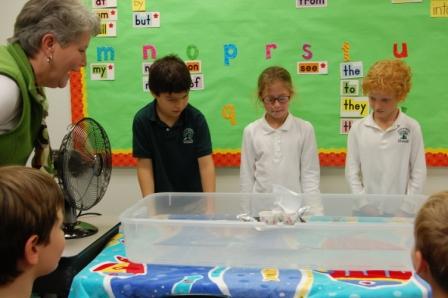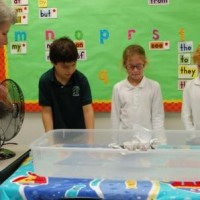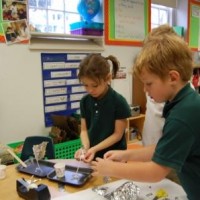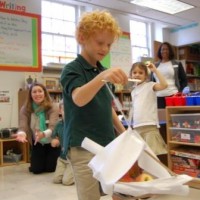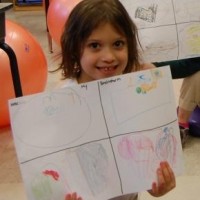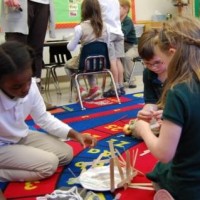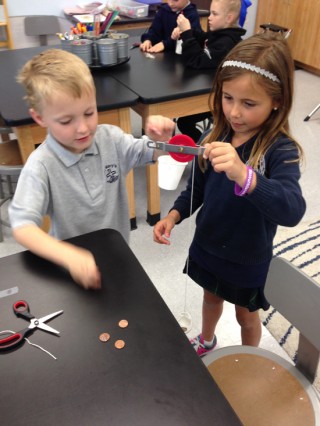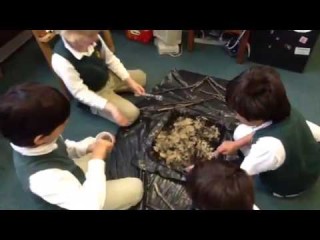Pop into the first grade classroom and you are likely to encounter small clusters of children huddled around a collection of foam trays, felt, colored straws, Scotch tape, and all manner of handy supplies. There will be much negotiating, demonstrating, and a general flurry of activity. This is what STEM looks like in first grade.
STEM is a hot topic in education circles right now, but the essence of STEM has long been at home in classrooms here at ACDS. The heart of STEM is problem-based learning–students are given a problem to solve, then they design something that solves the problem. In STEM, this problem just so happens to require the students to activate their math skills and science knowledge to effectively solve it.
In first grade, the design process follows a series of steps that are similar to the Scientific Method. The design process follows this path: Investigate, Brainstorm, Plan, Build, Test and Present.
To be clear, first grade engineers are just like professional engineers in that they don’t always solve problems using this sequential order! Depending on the project (or the engineer), our students may jump around to different steps, rewind, jump ahead and back a few more times, and even test and present multiple times before settling on a final design. This kind of experimentation and revision is highly encouraged!
Just as essential as the STEM concepts our first graders are learning are the collaboration and communication skills they must practice and refine throughout these projects. You can be sure that a small group of first graders do not all bring similar design ideas to the table, but they manage to come together and execute one group design. This means you have to understand the different components of your design and their value in order to convince your group. Luckily, first graders are usually game for anything, and they don’t mind when things don’t go as planned–it’s just back to building for the next round!
